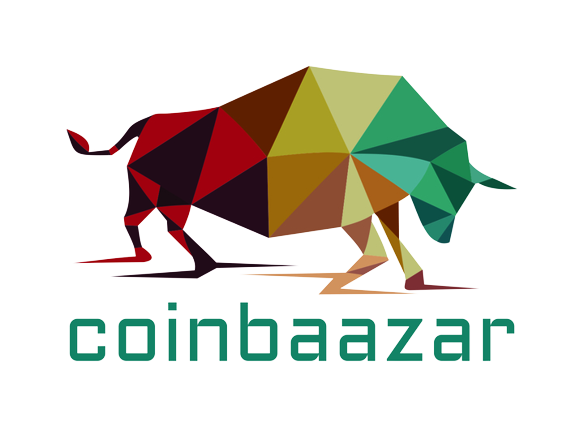What can Blockchains do to ensure fairness in AI?
Although experts believe that decentralized systems can help ensure the integrity and objectivity of data fed to AI systems, there are still significant limitations.
Artificial intelligence (AI) projects are quickly becoming an integral part of the modern technological paradigm, assisting in decision-making processes in a variety of sectors ranging from finance to healthcare. Nonetheless, despite significant progress, AI systems are not without flaws. One of the most pressing issues confronting AI today is the presence of systemic errors in a given set of data, which leads to skewed results when training machine learning models.
Because AI systems rely heavily on data, the quality of the input data is critical, as any type of skewed information can lead to bias within the system. This has the potential to exacerbate societal discrimination and inequality. As a result, ensuring the integrity and objectivity of data is critical.
A recent article, for example, investigates how AI-generated images, specifically those generated from data sets dominated by American-influenced sources, can misrepresent and homogenize the cultural context of facial expressions. It cites several soldiers or warriors from various historical periods, all with the same American-style smile.
Furthermore, the pervasive bias not only fails to capture the diversity and nuances of human expression, but it also runs the risk of erasing vital cultural histories and meanings, potentially affecting global mental health, well-being, and the richness of human experiences. To mitigate such bias, diverse and representative data sets must be included in AI training processes.
A variety of factors can lead to biased data in AI systems. To begin with, the collection process may be flawed, with samples that are not representative of the target population. This can result in certain groups being underrepresented or over represented. Second, historical biases can infiltrate training data, perpetuating existing societal prejudices. AI systems trained on biased historical data, for example, may continue to reinforce gender or racial stereotypes.
Finally, human biases can be introduced inadvertently during the data labeling process, as labelers may harbor unconscious prejudices. The selection of features or variables used in AI models can lead to biased results, as some features may be more correlated with specific groups, resulting in unfair treatment. To address these concerns, researchers and practitioners must be aware of potential sources of skewed objectivity and work diligently to eliminate them.
Can blockchain enable unbiased AI?
While blockchain technology can help with some aspects of keeping AI systems neutral, it is far from a panacea for completely eliminating biases. Machine learning models, for example, can develop discriminatory tendencies based on the data they are trained on. Furthermore, if the training data contains a variety of biases, the system will most likely learn them and reproduce them in its outputs.
However, blockchain technology can help to address AI biases in its own unique way. It can, for example, aid in ensuring data provenance and transparency. Decentralized systems can trace the origin of the data used to train AI systems, ensuring transparency in the data collection and aggregation process. This can assist stakeholders in identifying and addressing potential sources of bias.


Similarly, blockchains can enable more diverse and representative data sets to be developed by facilitating secure and efficient data sharing among multiple parties.
Furthermore, by decentralizing the training process, blockchain allows multiple parties to contribute their own information and expertise, reducing the influence of any single biased perspective.
Maintaining objectivity necessitates paying close attention to the various stages of AI development, such as data collection, model training, and evaluation. Furthermore, ongoing monitoring and updating of AI systems is critical for addressing potential biases that may emerge over time.
According to Ben Goertzel, founder and CEO of SingularityNET, a project that combines artificial intelligence and blockchain, to learn more about whether blockchain technology can make AI systems completely neutral.
According to him, the concept of “complete objectivity” is not particularly useful in the context of finite intelligence systems analyzing finite data sets.
“What blockchain and Web3 systems can offer is transparency, so that users can clearly see what bias an AI system has, rather than complete objectivity or lack of bias.” It also provides open configurability, allowing a user community to “tweak an AI model to have the bias it prefers while transparently seeing what bias it is reflecting,” he said.
He also stated that “bias” is not a dirty word in the field of AI research. Instead, it simply represents the orientation of an AI system searching for specific patterns in data. However, Goertzel acknowledged that the opaque skews imposed by centralized organizations on users who are unaware of them but are guided and influenced by them are something people should be wary of.
“Most popular AI algorithms, like ChatGPT, are poor in terms of transparency and disclosure of their own biases,” he said. As a result, decentralized participatory networks and open models are part of the solution to the AI-bias problem. Open-weight matrices that are trained, adapted models with open content, not just open-source.”
Similarly, Dan Peterson, chief operating officer of Tenet, an AI-focused blockchain network, told one of the news portals that quantifying neutrality is difficult, and that some AI metrics cannot be unbiased because there is no quantifiable line for when a data set loses neutrality. In his opinion, it all comes down to where the engineer draws the line, and that line can vary from person to person.
“Historically, the concept of anything being truly ‘unbiased’ has been a difficult one to overcome.” Although absolute truth in any data set fed into generative AI systems may be difficult to establish, “we can leverage the tools made more readily available to us through the use of blockchain and Web3 technology,” he said.
According to Peterson, techniques based on distributed systems, verifiability, and even social proofing can assist us in developing AI systems that are “as close to” absolute truth as possible. “However, it is not yet a turnkey solution; these developing technologies help us move the needle forward at breakneck speed as we continue to build out the systems of tomorrow,” he explained.
Looking ahead to an AI-powered future
Scalability is still a major concern for blockchain technology. As the number of users and transactions grows, blockchain solutions may be unable to handle the massive amounts of data generated and processed by AI systems. Furthermore, even the adoption and integration of blockchain-based solutions into existing AIs is fraught with difficulty.
First, there is a lack of knowledge and expertise in both AI and blockchain technologies, which may impede the development and deployment of solutions that effectively combine both paradigms. Second, persuading stakeholders of the benefits of blockchain platforms, particularly in terms of ensuring unbiased AI data transmission, may be difficult, at least at first.
Despite these obstacles, blockchain technology has enormous potential for leveling the rapidly evolving AI landscape. It is possible to reduce biases in data collection, management, and labeling by leveraging key features of blockchain, such as decentralization, transparency, and immutability, ultimately leading to more equitable AI systems. As a result, it will be interesting to see how the future unfolds from here on out.

